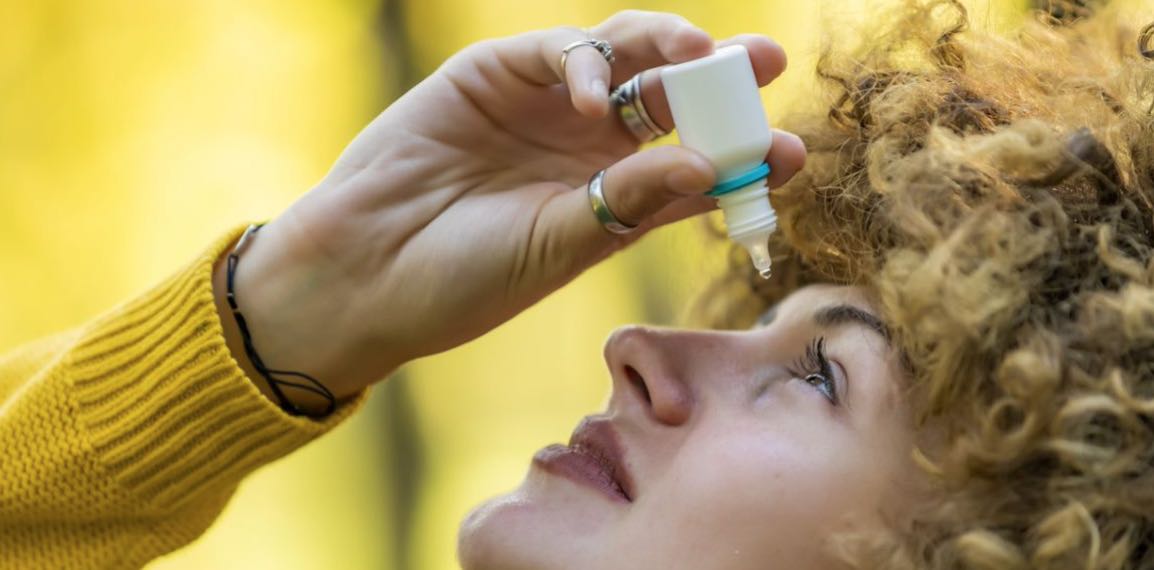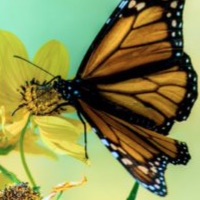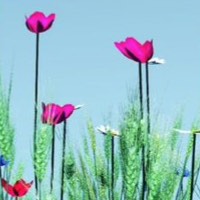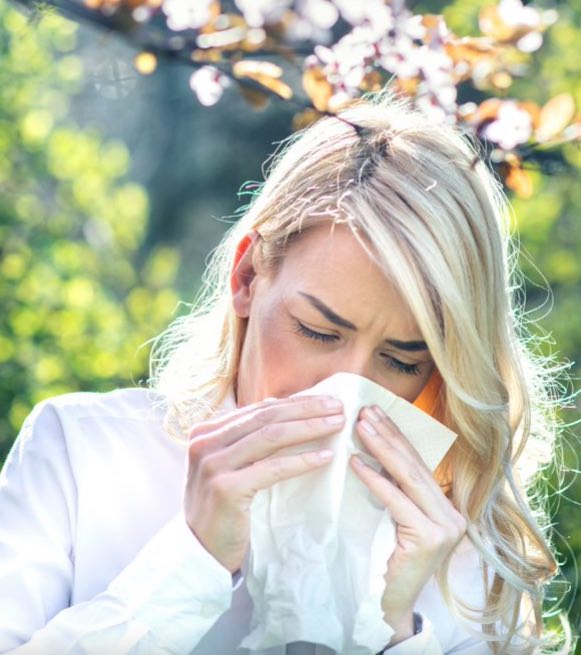A seasonal tester
In Seasonal
Follow this topic
Bookmark
Record learning outcomes

Claire Campbell, Lanes Health brand manager for Olbas and Earex, says that while the past 12 months saw a drop in seasonal allergies as lockdown restrictions improved air quality and mask wearing reduced exposure to pollen, growth is expected this year. “Preventative buying behaviour will likely see a peak in sales at the start of the season,” she says.
Hayfever can significantly affect quality of life, and advice to community pharmacists from Théa Pharmaceuticals is that “it’s vital to bear in mind health literacy when giving advice and talking to patients, whether it be on allergy or dry eye symptoms. The duty of the community pharmacist is to ensure they talk to their patients about more than just the reasons they might have come into store, and help them understand their problem, the symptoms and the options available.”
Allergy UK suggests identifying potential hay fever or allergy triggers by asking questions such as:
- Are the symptoms present all year round, or worse at specific times of the year?
- Are the symptoms worse outdoors?
- Are there pets in the house, and do the symptoms improve when away from the house?
- Are there any other situations where the symptoms get worse or better?
If the customer has been diagnosed with hayfever, or symptoms indicate that’s what they are dealing with, pharmacists can advise on symptom management, and signpost them to helpful resources, such as those available at Allergy UK.
How accurate are pollen apps?
Pollen forecasts can be essential help for hayfever sufferers, but research suggests that most apps only have a hit rate of about 50 per cent. In 2017, researchers analysed nine free mobile apps, focusing on their accuracy with regard to predicting pollen load in the 2016 season, to assess how useful they were for pollen allergy sufferers. Apps that gave forecasts about readiness to flower for grasses were ‘sufficiently accurate’, but the researchers concluded that pollen forecast quality needed improvement.
Now, the PollerGEN project led by the University of Bangor is carrying out extensive research into pollen allergy and collaborating with the Met Office to work on ways of improving forecasts of individual grass pollen species. The project aims to identify species of grass pollen present during the summer months across 16 specific collection sites in the UK and measure the abundance of allergenic species of grass. It should help to inform people about the different timing and environmental factors that put them at risk of exposure to pollen, a key strategy in the prevention of allergy and asthma attacks.
The duty of the community pharmacist is to ensure they talk to their patients about more than just the reasons they might have come in
According to airborne allergens expert Max Wiseberg, most hayfever sufferers (around 95 per cent) are allergic to grass pollen, while around 25 per cent are also (or exclusively) allergic to tree pollen.
There are three main categories of pollen: tree, grass and weed. There is a certain amount of crossover between them, but each has its own season for hayfever suffers in the UK:
- Tree pollen season runs from January until June – the end of the plane and pine pollen seasons
- Grass and oilseed rape seasons start in April. Expect symptoms to hang around until about September for grass, and June for oilseed rape
- Weed pollen season lasts from April until September.
It’s worth being aware of the times of year that a pollen trigger is around, as according to Mr Wiseberg, antihistamines are best started at least a month before the hayfever season starts. The advice from Allergy UK is that long-acting, non-sedating antihistamines are preferable to short-acting, sedating options such as chlorpheniramine, which are best avoided.
 Winter
Winter
December, January & February
January is the start of tree pollen season, so winter hayfever is often mistaken for a cold. Symptoms include a sore throat, blocked nose, a cough and irritated eyes.
 Spring
Spring
March, April & May
Spring hayfever is likely to be the worst, symptom wise, as tree, grass and weed pollen are all in the air from March until May. Common symptoms include painful sinuses and a cough.
 Summer
Summer
June, July & August
This is the peak time of year for grass and weed pollen, which can cause a rise in symptoms like watery or itchy eyes as people cut their lawns in summer months.
 Autumn
Autumn
September, October & November
Autumn hayfever symptoms tend to be less severe, as pollen levels start to decrease around the start of September.
NASAL SYMPTOMS
If symptoms are concentrated around the nose, a nasal spray may be useful to help with congestion and stuffiness. These can also be helpful for pregnant women or anyone who wants to avoid side effects, because the active ingredients get no further than the nose. Mr Wiseberg suggests trying steroid nasal sprays. “They work by fighting inflammation and mucus production, reducing the allergic reaction of nasal tissues to the inhaled allergen,” he explains. “Very few side effects are associated with steroid nasal sprays.” If a customer has had no luck with one type of spray, check the active ingredient as different combinations may work.
The first line of defence against pollen is avoidance. We’ve all got used to face masks over the last two years and they are suggested to keep the nose and mouth covered. Nasal saline washes and sprays are also suitable for most people and may even help reduce the need for other medication.
Saline washes can also be used in conjunction with a steroid nasal spray to promote a better uptake of steroids in the nasal cavity, according to the SinuSalt brand. The SinuSalt formulation contains xylitol, which is said to be “extremely hygroscopic”, with “a moisturising effect on the mucosa, making the irrigation experience more pleasant”.
EYE SYMPTOMS
Mr Wiseberg suggests that eye drops can be helpful because they work in one of three ways to reduce the allergic reaction to pollen. “Some stop histamine release, some are anti-inflammatory, and others block the inflammation caused by histamine,” he explains. “They can bring relief to itchy eyes and help stop watery or streaming eyes.”
The Théa range includes antihistamine and vasoconstrictor formulations, as well as steroid and NSAID eye drops – some of which are preservative-free. “Opting for preservative-free products is a crucial consideration for anyone who uses drops multiple times a day, including people with hay fever,” says the company. “Preservatives are increasingly recognised as having a negative impact on ocular structures and it’s important to educate patients on the benefits of preservative-free.”
Sultan Dajani, community pharmacist and advisor to GoldenEye, says: “Many people suffer specifically from seasonal allergic conjunctivitis. The main symptoms are itching, burning, watering and redness of the eye, and puffiness of the eyelids. Pollen lands on the eye surface and triggers the release of substances such as histamine, which cause the symptoms. Unfortunately, our instinct when our eyes are sore or itchy is to rub them, and this can make things worse.
“Human skin is teeming with bacteria. Most of those bacteria are harmless, but some are not and can lead to infections. Our hands come into contact with hundreds of things each day, from people to surfaces, and they pick up bacteria which can easily be passed to eyes when we touch or rub them.”
Mr Dajani advises that mild eye or eyelid infections, such as styes, conjunctivitis or blepharitis, should be easily treatable with a formulation such as Goldeneye, which contains propamidine isethionate, which also acts as a disinfectant and has antifungal properties.
Unfortunately, our instinct when our eyes are sore or itchy is to rub them, and this can make things worse
Francesca Marchetti, optician from Rohto Dry Aid says: “Some people’s eyes are particularly sensitive to pollen. Red, itchy or sticky eyes occur when the immune system reacts to pollen and the body’s natural response is to try and wash it out, which can lead to watery eyes. If a customer needs relief from eye-specific symptoms, a topical approach is logical, especially because of the relative lack of systemic side effects.
“Rohto Dry Aid uses unique ‘Tearshield’ technology to offer clinically proven, fast-acting eight in one symptom relief for soreness, itching, irritation, burning, grittiness, stinging and tiredness.” Rohto Dry Aid drops are approved as a medical device by the Medicines and Healthcare products Regulatory Agency (MHRA), and are suitable for contact lens wearers.
Théa is launching Zaspray, a three in one solution to relieve itchy and dry eyes, especially those caused by allergies. The spray is designed to hydrate, lubricate, and soothe, and its preservative-free formula helps protect eye tissue and restore and improve tear film stability, says the company. Active ingredients include 0.2 per cent hyaluronic acid to keep the ocular eye surface lubricated, hydrated and protected, and improve tear film stability; 4.5 per cent ‘Per-Lip’ complex, which includes liposomes to ease irritation and discomfort, and perilla seed, a natural plant extract and antioxidant.
Théa experts suggest that eye symptoms can be alleviated by blinking regularly to lubricate the eyes, washing the pollen out and bathing eyes in cool boiled water.
“Many people are still using cotton wool on their eyes, but our advice is to opt for sterile eyelid cleansing products such as Blephaclean instead,” says the company. “These contain a micellar solution, which is free from preservatives, parabens, soap, and perfumes. Blephaclean keeps the eyelids clean whilst respecting the skin around the eyes and its natural bacteria.”
For long term conditions, it may be also beneficial to use artificial tears, such as Thealoz Duo, which help to dilute allergens, act like a physical barrier, reduce redness, and protect the surface of the eye. More information on the Théa allergy range is available at the professional site on www.thea-pharmaceuticals.co.uk.
General advice for hayfever sufferers
 Wear wraparound sunglasses when outdoors to reduce the likelihood of pollen particles coming into contact with the eyes
Wear wraparound sunglasses when outdoors to reduce the likelihood of pollen particles coming into contact with the eyes- Close windows and doors to prevent pollen blowing into the home
- Consider using an air filter/purifier with a HEPA filter to capture pollen and dust particles, and cool and circulate air
- Tie hair up and wear a hat when outside
- Shower at night before sleeping
- Dry clothes indoors rather than on an outdoor clothesline
- Vacuum the house regularly (especially beds and fabrics) to remove pollen particles.
Going natural
Organic, drug-free allergen barrier balms like HayMax can be applied to nostrils and the skin around the eyes in the morning and throughout the day. It is thought that they can trap more than a third of pollen particles before they enter the body.
Ms Campbell says that when it comes to summer allergies, relief products are very much needs-driven, so pharmacists should consider all symptoms. To combat nasal congestion, she says Olbas Nasal Spray ticks numerous boxes, helping to gently unblock the nasal passage in just two minutes, while the mint extract provides a refreshing sensation to help relieve the symptoms and irritation of congestion associated with hay fever.
“Excessive ear wax production and blocked ears occur when the body reacts to the pollen allergen by producing excessive amounts of histamine, irritating the lining of the ear canal, causing it to overproduce,” she says. “If left untreated, this excess earwax can build up and cause the ears to become blocked, which can be painful. Earex Advance ear drops are specifically designed to soften and remove hardened earwax that has built up over time and, when used regularly, can also help to prevent earwax build-up, making it an ideal solution for people with a tendency to suffer from ear wax problems caused by summer allergies, including hayfever.”
Views of the P3pharmacy category panel
“This large category seems to get busier every year as fewer people see their GP these days. More people are coming to pharmacy first, so we allocate a large area to hayfever products. The display seems to prompt people to ask questions as they realise we can deal with the different symptoms; watery eye queries are on the rise. Top sellers for us are Clarityn, Piriton and Zirtek; their generic alternatives also do well. For eye symptoms, our best seller is Opticrom. Have your products behind the counter at eye level so customers can see them clearly, and ensure you have plenty of product and advice leaflets on display.”
Lila Thakerar, Shaftesbury Pharmacy, Harrow
“There’s a lot of pollen-emitting greenery in South Wales and as we offer products on the Common Ailments Scheme, we can see that a lot of patients are affected; a good handful say they’ve never experienced hay fever before. Piriton sells well for those having trouble sleeping. Generic loratadine and especially cetirizine fly off the shelves. Beconase nasal spray and Sterimar hay fever sprays are favourites of mine, and more people are opting for drug-free products. Once daily non-drowsy tablets are always a ‘go-to’. Create a central space to highlight seasonal products. Ensuring there is information available is key to a good display.”
Marisa Maciborka, Well Pharmacy, Tonteg, South Glamorgan
“This is a vital category because it’s almost all self-treatment. GPs are pushing more patients our way. There’s increased interest in our Kenalog hayfever injection service at the start of the season. As an independent prescriber, I can administer it. We charge £45. We tailor the treatment we recommend to the most prevalent symptoms. We get first time adult sufferers quite often. For eye symptoms, Opticrom is our best seller. For customers who’ve not found relief from treatments like cetirizine, I tend to recommend Benadryl. We use our seasonal gondola for hayfever as it’s easy for customers to spot.”
Lindsey Fairbrother, Goodlife Pharmacy, Hatton, Derbyshire
